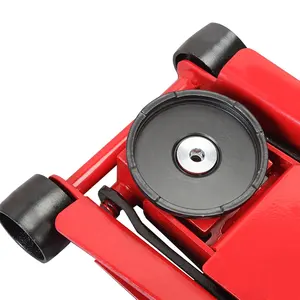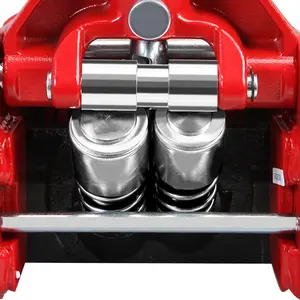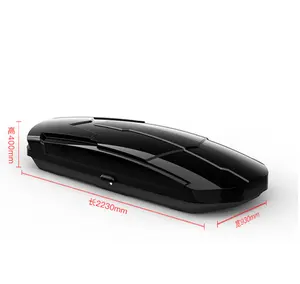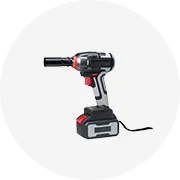Beliebt in Ihrer Branche

CE 20 Tonnen kunden spezifisch Hochwertige verschiedene Auto lader Pneumatischer Wagenheber Garage Air Bottle Jack
40,10 € - 44,11 €
Mindestbestellmenge: 10 Stück






DC Power Metall Power Jack Buchse 12V 2,1*5,5mm 2,5*5,5mm Buchse DC Power Jack
0,0742 € - 0,0927 €
Mindestbestellmenge: 100 Stück







HF2306 Werkspreis multifunktionale Elektroauto-Steckerschlüssel umfassender Werkzeugsatz für Autowerkstatt
25,96 € - 63,96 €
Mindestbestellmenge: 1 Satz
Versand pro Stück: 97,50 €







HF2ST Direkt ab Werk 5 in 1 Elektroauto-Wagenheber DC12V 3T-Wagenheber Kompressors chl üssel Notfall-Werkzeugs atz Motor heber Wagenheber
13,91 € - 45,43 €
Mindestbestellmenge: 1 Satz







Automotive 3 tonnen horizontale hydraulische jack 3T auto jack 4 tonnen auto limousine SUV tausend gold jack
41,72 € - 55,62 €
Mindestbestellmenge: 300 Sätze







YT-C zweistufiger 18t hydraulischer Kraft halter mit synchronem Wagenheber system
908,44 € - 973,33 €
Mindestbestellmenge: 1 Satz
Top-Kategorien
Über porta power jack 20t
Rüsten Sie sich aus, um Probleme mit Ihrem Fahrzeug zu lösen, oder füllen Sie Ihre Garage mit einer hervorragenden Auswahl an. porta power jack 20t auf Alibaba.com .. porta power jack 20t sind unverzichtbar, um Fahrzeuge und sogar andere Objekte anzuheben, um Reparaturen, Lackierungen oder andere derartige Maßnahmen durchzuführen. < porta power jack 20t sind in verschiedenen Höhen erhältlich und können unterschiedlich viel Gewicht tragen. Daher ist es wichtig, das richtige für den beabsichtigten Zweck auszuwählen. Dies ist auch der Grund, warum Garagenbesitzer und diejenigen, die Fahrzeuge reparieren, sich mit vielen verschiedenen Arten eindecken müssen.
porta power jack 20t, das auf Alibaba.com erhältlich ist, besteht aus den besten Materialien wie Stahl und Aluminium, die garantiert nicht rosten oder korrodieren. porta power jack 20t kann angepasst und angepasst werden. Beispielsweise können die Höhen je nach Verwendungszweck angepasst werden. Hydraulik- und Drehpunktvarianten sind Beispiele für die Art der angebotenen Artikel.
porta power jack 20t bietet viele leistungssteigernde Funktionen. Zum Beispiel haben sie gepolsterte Sitze, um Kratzer auf dem Lack des Fahrzeugs zu vermeiden. porta power jack 20t sind leicht und leicht zu transportieren, sodass der Benutzer nie unbemerkt bleibt. Viele. porta power jack 20t haben das Gehäuse erweitert und sehen äußerlich elegant aus.
Stöbern Sie durch die große Auswahl an. porta power jack 20t auf Alibaba.com und wählen Sie diejenigen aus, die am besten zu Ihnen passen. porta power jack 20t Lieferanten sollten sich mit diesen hochwertigen Artikeln auf dieser Website eindecken da sie unübertroffene wettbewerbsfähige Preise sind. Finden Sie noch heute die besten Angebote.
porta power jack 20t, das auf Alibaba.com erhältlich ist, besteht aus den besten Materialien wie Stahl und Aluminium, die garantiert nicht rosten oder korrodieren. porta power jack 20t kann angepasst und angepasst werden. Beispielsweise können die Höhen je nach Verwendungszweck angepasst werden. Hydraulik- und Drehpunktvarianten sind Beispiele für die Art der angebotenen Artikel.
porta power jack 20t bietet viele leistungssteigernde Funktionen. Zum Beispiel haben sie gepolsterte Sitze, um Kratzer auf dem Lack des Fahrzeugs zu vermeiden. porta power jack 20t sind leicht und leicht zu transportieren, sodass der Benutzer nie unbemerkt bleibt. Viele. porta power jack 20t haben das Gehäuse erweitert und sehen äußerlich elegant aus.
Stöbern Sie durch die große Auswahl an. porta power jack 20t auf Alibaba.com und wählen Sie diejenigen aus, die am besten zu Ihnen passen. porta power jack 20t Lieferanten sollten sich mit diesen hochwertigen Artikeln auf dieser Website eindecken da sie unübertroffene wettbewerbsfähige Preise sind. Finden Sie noch heute die besten Angebote.






















